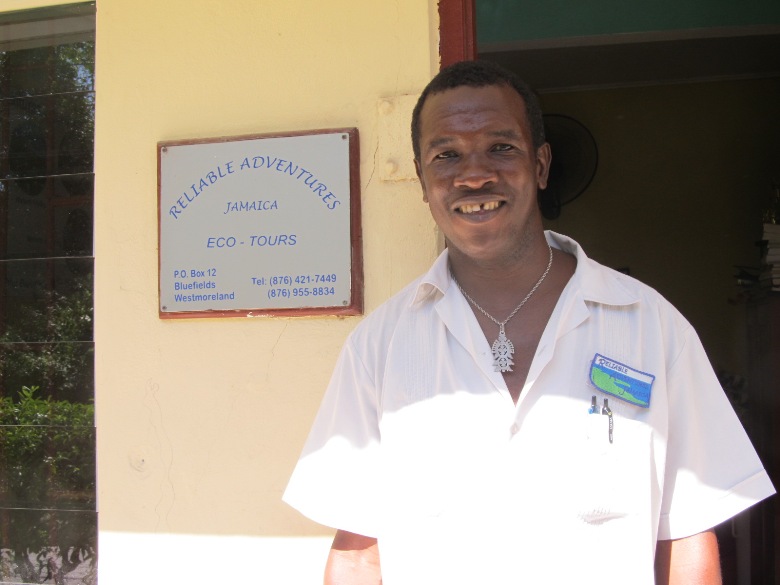Getting out of the bubble while on vacation


Wolde Kristos is a man with a mission—and a vision.
He hopes to bring the sleepy tiny Jamaican town of Bluefields Bay into the 21st Century—tourist wise.
But he’s not aiming to build a big hotel. Jamaica already has enough of those. He wants to offer authentic experiences that at the same time will enable tourists to meet the locals, see the region’s birds, visit artisans and eat local food. If successful, that will employ people who badly need work (40 percent of the women are unemployed and most men under employed).
The 40-year-old Kristos, the father of three and husband of a police officer explains, “We want to take on our own destiny, educate ourselves about the hospitality industry and create employment opportunities.”
He drives me up in to the Bluefields Mountain where ruins of century-old planters’ houses are adjacent to small villages inhabited by the descendents of the African slaves who worked the plantations here.
We are staying in one of the six sea side Bluefields Bay Villas, whose owners have made it a priority to give back to the community and encourage guests to do the same.
Kristos has been instrumental in creating a community center—the Peoples Community Association—that he hopes will be the hub of the movement. An outdoor market for artisans to showcase their carvings and paintings is scheduled to open next year; a group of women are working creating apron s and placemats. “There are some of the loveliest people here,” he says.
We visit a local preschool where we bring markers, crayons and books from home. The children couldn’t be more adorable and there are opportunities to volunteer here.
But tourists need to get the message that it is safe to venture out of their manicured hotels. “You will really feel the love,” he promises, and here the crime rate is very low. He introduces me to Jahealo Calvin Clunie who shows off his paintings and carvings and another artist Jerry McDonald, each of whom now showcases his work in a tiny shack by the side of the road.
“This is much safer than other parts of Jamaica,” Kristos says and it certainly feels that way with school kids waving as they head home for lunch. We are about 45 miles southwest of Montego Bay and 45 miles east of Negril.
In fact, my three girlfriends headed to Negril to play golf while I’m touring the local community. There is the opportunity for bird watching tours (www.jamaicabirding.com), hikes in the mountain, the chance to visit locals for dinner, snorkel on the reef just off shore or go fishing. The six-mile long area of the bay here is now a protected fish sanctuary to keep it from being over fished.
Kristos believes there are many tourists who want to see more of Jamaica than the beaches and I think he’s right. He’d welcome tourists who want to spend a morning volunteering or giving a talk to the locals on business development or protecting their local environment. “Our aim is to show people the real Jamaica.” Already he is working with the government—Reliable Adventures Jamaica, he says proudly, is 100 per cent community owned.
And he adds, tourism here goes way back—to when the Spanish and British planters invited their friends to sample their Caribbean lifestyle.
He introduces me to Omar Austin, who is famous for the jerk chicken he sells from a stand at the side of the road. He raises the chickens themselves, seasons them, makes the sauce and sells them at a stand by the side of the road. Delicious—and cheap –$4 for a quarter chicken.
But he won’t part with the recipe, he tells me. On a good day, he sells 15 chickens he said, sometimes working from 10 am until 10 pm. The chicken is yummy.
“People want to meet people when they travel to another country,” believes Kristos. “They want to learn about us.” And the food.
